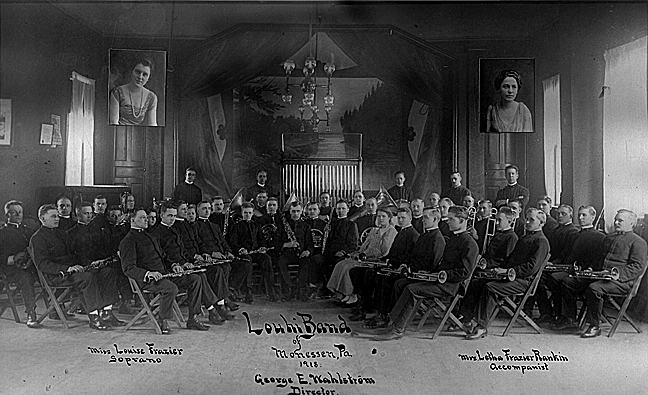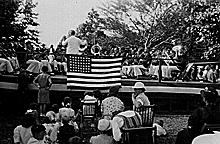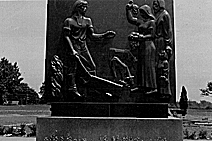
The Finnish immigrant's love for music prompted the formation of the Louhi Symphonic Band of Monessen, Pennsylvania. On February 12, 1900, fourteen young men banded together to form a musical organization that became world famous. Under the direction of Axel Ruuti, who was the initiator, the Band began rehearsals.
The Louhi Band continued to grow in membership and in the spring of 1905 was fortunate to acquire the services of George E. Wahlstrom, an accomplished musician from Finland. He later left to teach music and to conduct bands in other states where there were Finnish settlements. In 1915 he returned to Monessen to conduct the Louhi Band. The Band achieved outstanding success under Mr. Wahlstrom's leadership.
On July 4, 1918, the Louhi Band took part in the All Nations Parade in New York City during World War I. While in New York they recorded "Maamme Laulu" and "Pois Rannoilta Suomen" for the Victor label.

The Band's most ambitious and costly adventure was its concert tour of Finland in 1920. The Louhi Band was accompanied by many tourists, in fact, a total of 400. Thirty concerts were given in cities and rural villages during June, July, and August. The first concert was performed in Helsinki before the President, Jean Sibelius, and other dignitaries. Jean Sibelius presented the band with a wreath that was on display at the Monessen Finnish Lutheran church for many years. Everywhere concerts were extremely favorable. The concert tour covered territory from Helsinki in the south to beyond the Arctic Circle in the north, from the border of Russia in the east to the Gulf of Bothnia and the border of Sweden in the west.
In 1938 the band went to Chester, Pennsylvania to give a concert celebrating the 300th anniversary of the landing of the first Finns in the Delaware Valley in 1638. Two years later concerts were presented at the New York World's Fair on Finland Day. The band conductor from 1936 to 1942 was Paul J. Passoja, who was a Monessen School District instrumental music teacher and conductor of the Monessen High School Band.


At the initial meeting there were so many eager to play that funds had to be raised to buy instruments, which were purchased in Cleveland. While waiting for the instruments to arrive, the group rehearsed marching. The rehearsals were held at the Finnish Temperance Society Hall at the corner of Fourth and Chestnut Streets. Eventually the membership reached fifty men and one woman, Ksenia Tantarri Palomaki. In 1910 there were six female members, but they dropped out.
The Sibelius Club printed, published, and distributed music all over the United States. Branches were set up in Brooklyn, Cleveland, Weirton, and De Kalb, Illinois. Its headquarters was in Monessen. The band's music library consisted of 1500 compositions.
During the winter months, a series of concerts was performed in the Monessen High School auditorium. Concerts during the summer were played in an outdoor bandstand in the center of Sixth Street Park and later in the newly developed City Park on Grand Boulevard.
Louhi was a musical organization that during its over forty years of existence became world famous. The City of Monessen was proud and appreciative of the band.
The directors form 1900 to 1942 were: Axel Ruuti, John Kleimola, John Pasvola, Ernest Paananen, Vaino Stenberg, Isak Kauppainen, J. P. Liimstainen, Waldemar Eklund, A. Malia, George E. Wahlstrom, John R. Kultti, Victor Taaipale, M. S. Roscerito, Louis Koski, Walter Wiita, and Paul J. Passoja.
Learn more about the Louhi Band and Monessen Finnish culture
• Paul Passoja, the Last Conductor of the Louhi Band by Everett Arthur Niemela
• I Remember Monessen by Elma Passoja Niemela